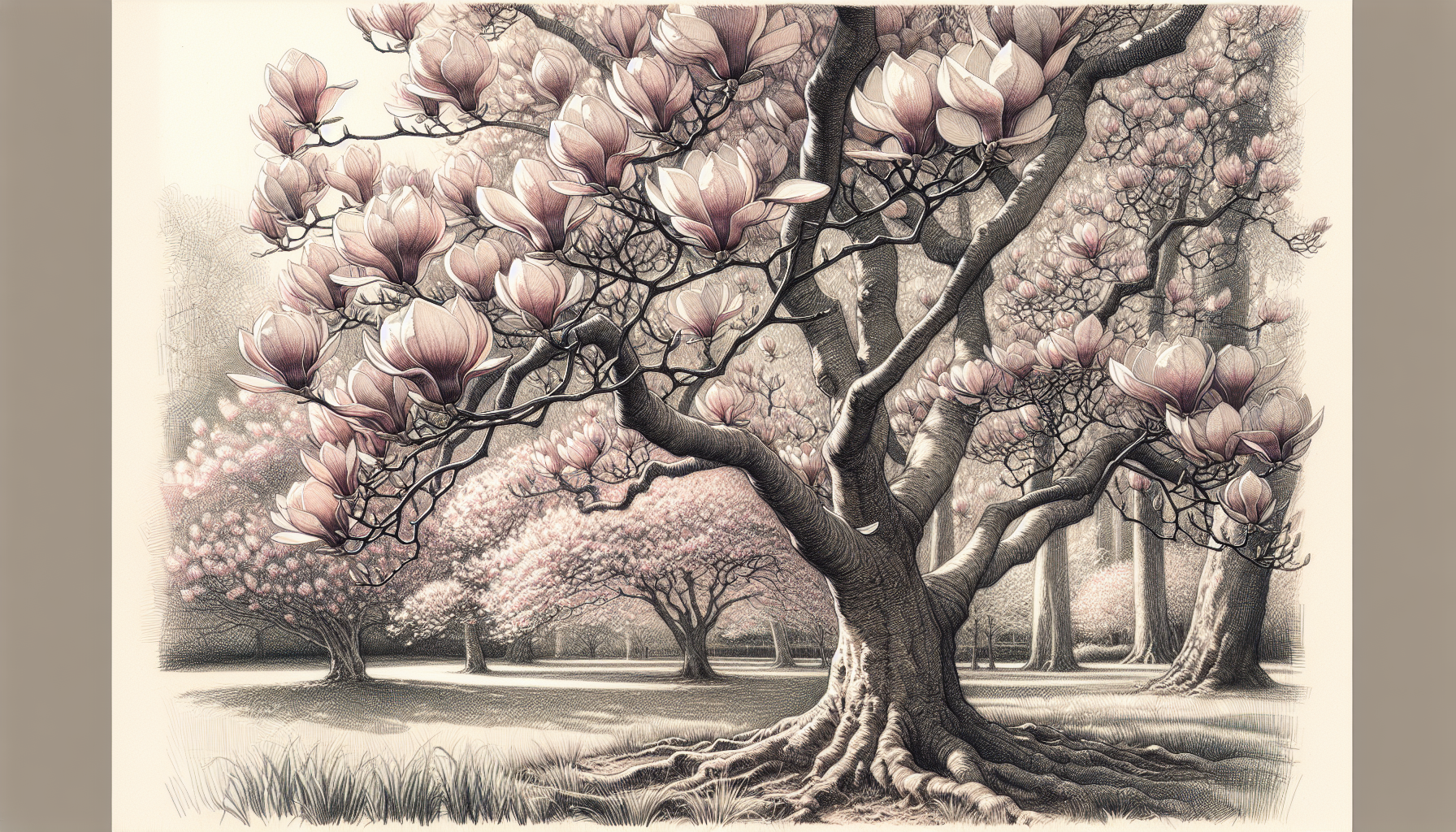There’s a reason magnolias are currently all the rage in gardening circles. They’re hardy, their blooms are show-stopping, and their evergreen nature means they provide beauty all year round. So, whether you’re considering adding a magnolia to your garden or have recently planted one, this article will give you all the insights you need about this magnificent tree.
Emblematic of both grace and resilience, magnolias are a beloved addition to any garden. With their large, glossy leaves and breathtaking flowers that bloom in shades of white, pink, purple, or yellow, these trees command attention.
They not only enhance the visual appeal of your outdoor space but also create an aromatic oasis with their sweet, lemony fragrance.

Understanding Magnolias
Native to both Asia and America, magnolias are an ancient species. Fossil evidence suggests that magnolias were flourishing long before bees came into existence, which is why they’re uniquely adapted to encourage pollination by beetles. Today, magnolias can be found in a wide range of climates and landscapes, from temperate regions to tropical locales.
Magnolias range in size from petite shrubs to towering trees, a testament to their versatility. The Southern magnolia, known for its large white flowers and glossy evergreen leaves, can grow up to 80 feet tall. Meanwhile, the saucer magnolia showcases stunning purple-pink blossoms on a smaller, shrub-like tree.
Caring for Magnolias
Despite their exquisite appearance, magnolias are surprisingly resilient and relatively easy to care for.
They prefer full sun to partial shade and thrive in well-draining, slightly acidic soil. However, they’re adaptable and can tolerate less than ideal soil conditions.
Once established, magnolias require minimal care. They’re drought-tolerant and need only occasional deep watering during dry periods.
Pruning is typically unnecessary unless you’re shaping the tree or removing damaged branches.
While magnolias can withstand pests and diseases better than many other garden plants, they’re not completely immune.
Scale insects, fungal leaf spots, and verticillium wilt are some of the potential issues that can plague magnolias. Regular monitoring, proper watering, and judicious use of fungicides can go a long way in maintaining the health of your magnolia tree.
Magnolia Magic: More than just a Pretty Tree
Aside from their aesthetic appeal, magnolias offer several other benefits. Their dense canopy makes them an excellent choice for providing shade. They can also act as a privacy screen, blocking unwanted views when planted in a row.
Furthermore, magnolias are a haven for wildlife. Their flowers attract pollinators like beetles and butterflies, while their seed pods provide food for songbirds.
Choosing to plant a magnolia tree in your garden is a commitment to a legacy of beauty. These trees can live for multiple decades, blessing generation after generation with their magnificent blooms.
Whether you’re an experienced gardener or just starting out, the magnolia makes an excellent choice. With their beauty, versatility, and resilience, it’s no wonder they’re such a popular pick in gardens around the globe.
Even better, their care requirements are relatively simple, making them an accessible choice for gardeners of all levels. The magnolia tree truly is a gift that keeps on giving, not just today or tomorrow, but for years to come.
Leave a Reply